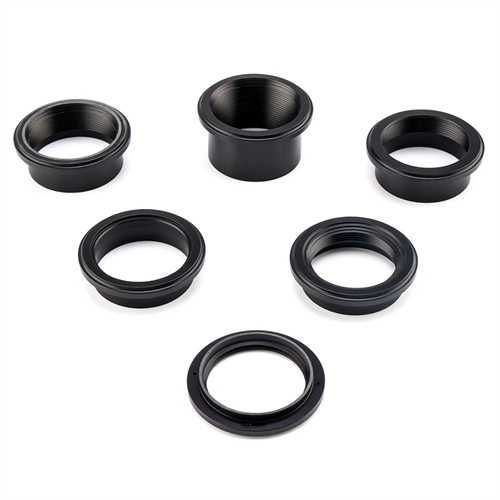Selection of injection molding release agent
Injection molding release agents are key auxiliary materials that reduce friction between the plastic part and the mold, ensuring smooth demolding. Their selection directly impacts part quality, production efficiency, and mold life. High-quality release agents form a uniform, lubricating film on the mold cavity surface, reducing adhesion between the part and the mold, reducing demolding force by 30%-50%, and preventing surface defects such as scratches and whitening. However, improperly selected release agents can contaminate the part surface, reduce gloss, and even hinder subsequent processing steps such as painting and bonding. For example, when producing automotive interior parts that require spray painting, using a silicone-containing release agent can prevent the paint from adhering, causing paint to flake and resulting in significant scrap. Therefore, it is crucial to carefully select a release agent based on the part material, mold structure, and subsequent processing requirements.

There are many types of release agents, classified by chemical composition into silicone, fluorine, wax, and ester types, each with its own unique characteristics and application range. Silicone-based release agents, primarily composed of silicone oil and silicone resin, offer excellent mold release effectiveness and are inexpensive. They are suitable for most thermoplastics, such as PP, PE, and ABS. However, their residual residue can affect secondary processing, making them unsuitable for parts requiring painting or printing. Fluorine-based release agents, primarily composed of fluorine-containing compounds, offer excellent chemical stability, high-temperature resistance, and excellent mold release effectiveness with minimal residual residue. They are suitable for high-temperature molded engineering plastics such as PC, PA, and POM, as well as parts requiring secondary processing. However, they are more expensive, 5-10 times more expensive than silicone-based release agents. Wax-based release agents, made from natural or synthetic waxes, offer excellent film-forming properties and minimal contamination to plastic parts. They are suitable for parts requiring a high appearance, such as cosmetic bottles. However, their release durability is poor, requiring frequent reapplication. Ester-based release agents are mainly composed of fatty acid esters, have good compatibility, are suitable for plastics that are susceptible to corrosion, such as PVC, and can effectively prevent molds from being corroded.

When selecting a release agent, consider the characteristics of the plastic part material. Different plastics have varying degrees of adaptability to release agents. For polyolefin plastics (such as PP and PE), due to their low surface energy and weak adhesion to the mold, inexpensive silicone or wax-based release agents can be used. For example, in the production of PE film, spraying with diluted silicone oil can meet mold release requirements. For engineering plastics (such as PC and PA), due to the high molding temperatures and strong adhesion to the mold, high-temperature resistant fluorine-based or high-grade silicone-based release agents are required. For example, when molding PC lenses , a fluorine-based release agent with a temperature resistance of over 250°C is required to prevent decomposition and contamination of the plastic part at high temperatures. For highly polar plastics (such as PVC and POM), an ester-based release agent with good material compatibility should be selected to avoid chemical reactions with the plastic that could affect part performance. For example, using an ester-based release agent for PVC parts can effectively prevent mold surface corrosion and extend mold life.

Mold structure and molding process significantly influence the choice of release agent. For complex molds (such as those with deep cavities or undercuts), a release agent with excellent penetration and durability is required. Spray-type fluorine-based release agents are ideal. They offer excellent atomization, evenly covering every corner of the mold, and form a durable film that can last for 50-100 mold cycles without reapplication. For molds used in automated production, low-volatility, fast-drying release agents, such as quick-drying silicone-based release agents, should be selected. These release agents dry in 30-60 seconds after spraying, minimizing production cycle time. For high-temperature molding processes (such as thermoset molding, exceeding 180°C), high-temperature-resistant release agents, such as polytetrafluoroethylene-based release agents, are essential. These agents maintain stable release properties even at high temperatures. For example, in BMC (bulk molding compound) molding, mold temperatures can reach 150-180°C. Using a polytetrafluoroethylene-based release agent ensures stable release from each mold without generating decomposition products that could contaminate the molded part.

The proper use and precautions of release agents are crucial for achieving optimal results. Before application, clean the mold cavity surface to remove any residual plastic debris, oil, and other contaminants. Wipe with a dedicated mold cleaner to ensure even adhesion of the release agent. Strictly follow the release agent dilution ratio specified in the manufacturer’s instructions. Underdilution will result in excess release agent residue, contaminating the plastic part. Overdilution will prevent the formation of an effective film, impairing release performance. For example, silicone release agents are typically diluted with solvent at a ratio of 1:10-1:50. When spraying, maintain a distance of 30-50 cm between the spray gun and the mold surface, moving the spray gun evenly to avoid accumulation. For complex areas, apply multiple thin coats rather than a single thick coat. Store tightly sealed after use to prevent volatilization and deterioration. Furthermore, regularly evaluate the release agent’s effectiveness and adjust the type or dosage based on changes in part quality. By selecting and applying release agents appropriately, you can reduce the scrap rate due to poor release to below 1%, significantly improving production efficiency.
